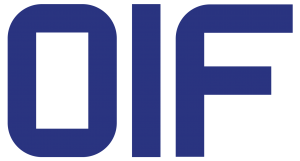OIF CONFIRMS PARTICIPANTS FOR 2018 JOINT-NETWORK OPERATOR, MULTI-VENDOR SDN TRANSPORT API INTEROPERABILITY DEMONSTRATION
Focused on accelerating the commercialization of transport SDN, leading global network operators and vendors will test new, more dynamic use cases
Fremont, Calif. —April 10, 2018 – Committed to accelerating the commercialization of transport SDN worldwide, the Optical Internetworking Forum (OIF) today announced plans for its 2018 Software-Defined Networking (SDN) Transport Application Programming Interface (T-API) interoperability demonstration. In collaboration with MEF, this year’s demonstration will bring new dynamic behavior use cases and deployment scenarios into network operator labs around the world to test and validate the industry leading T-API 2.0 northbound interface (NBI) from the Open Networking Foundation (ONF).
The 2018 event builds on the OIF’s previous 2016 interoperability test and demonstration which addressed multi-layer and multi-domain environments as well as on the 2014 demo which prototyped the use of Northbound APIs and helped advance transport SDN standardization. The event will also incorporate service provisioning scenarios at the LSO (Lifecycle Service Orchestration) Presto reference point in the MEF LSO architecture, using the MEF NRP Interface Profile Specification (MEF 60), which defines T-API extensions in support of MEF Carrier Ethernet services.
Network operators are rapidly moving toward giving customers and their applications the ability to dynamically control services, and do it in real-time. The days of waiting for service changes will soon be a thing of the past. To achieve this, they need the ability to dynamically move capacity quickly in open networks to avoid network congestion and provide better services to customers.
“With network operators leading the charge for more dynamic and open networks, there has to be widespread adoption of transport SDN. Through working through the specifications, rigorous interoperability testing and validation, this year’s demo is intended to substantiate T-API as the NBI of choice,” said Dave Brown, Nokia and OIF President. “We also look forward to our collaboration with MEF and the depth of expertise the organization brings to this demonstration.”
“MEF is pleased to contribute our LSO Presto NRP API work in support of the OIF SDN Transport API Interop Demo as we advance toward a common goal of orchestrating dynamic services over automated networks powered by SDN and LSO,” said Pascal Menezes, CTO, MEF. “This is exactly the type of collaboration that we need to accelerate industry innovation and deliver lasting value for service providers and their end customers.”
“The work done by OIF is critically important to network operators around the world as we work to provide our customers with better services and higher efficiency, which will definitely help the monetization of our network capacity,” said Dr. Junjie Li, China Telecom and OIF Network Operator Working Group Chair.
The international joint-network operator, multi-vendor optical networking interoperability demonstration includes network operator hosts CenturyLink, China Telecom, SK Telecom and Telefonica and participating vendors include ADVA Optical Networking SE, Coriant, NEC/Netcracker, Nokia, SM Optics and ZTE Corporation. Centre Tecnològic Telecomunicacions Catalunya is the participating academic and/or research institution and TELUS Communications is participating as a consulting network operator.
Regional demonstration read-out events will take place in mid-2018 (June/July) and a whitepaper describing the event will be available to the public following the announcement of the results. Additional information can be found at http://www.oiforum.com/meetings-and-events/2018-oif-sdn-t-api-demo/
2018 OIF SDN Transport API Interoperability Demonstration
Committed to accelerating the commercialization of transport SDN worldwide, the Optical Internetworking Forum (OIF), in collaboration with MEF, will bring new dynamic behavior use cases and deployment scenarios into network operator labs around the world to test multi-vendor interoperability of the industry leading T-API 2.0 northbound interface (NBI) from the Open Networking Foundation (ONF). The 2018 Software-Defined Networking (SDN) Transport Application Programming Interface (T-API) interoperability demonstration builds on the OIF’s 2016 interoperability test and demonstration which addressed multi-layer and multi-domain environments as well as on the 2014 demo which prototyped the use of Northbound APIs and helped advance transport SDN standardization.
Regional demonstration read-out events will take place in Summer 2018 and a whitepaper will be available to the public. Additional information can be found at http://www.oiforum.com/meetings-and-events/2018-oif-sdn-t-api-demo/
About the OIF
The OIF facilitates the development and deployment of interoperable networking solutions and services. Members collaborate to drive Implementation Agreements (IAs) and interoperability demonstrations to accelerate and maximize market adoption of advanced internetworking technologies. OIF work applies to optical and electrical interconnects, optical component and network processing technologies, and to network control and operations including software defined networks and network function virtualization. The OIF actively supports and extends the work of national and international standards bodies. Launched in 1998, the OIF is the only industry group uniting representatives from across the spectrum of networking, including many of the world’s leading service providers, system vendors, component manufacturers, software and testing vendors. Information on the OIF can be found at http://www.oiforum.com
PR Contact:
Leah Wilkinson
Wilkinson + Associates for the OIF
Email: leah@wilkinson.associates
Office: +1-703-907-0010

